Apple wants to make screening phone calls, dictating text messages and receiving audio messages easier in iOS 17. For Google Pixel fans, that should sound very familiar.
At its Worldwide Developers Conference on Monday, Apple demonstrated a bevy of new features arriving on iPhones this fall. While the new live photo stickers and stylized “posters” for contact photos may have grabbed headlines, Apple also previewed a handful of features that were reminiscent of Google’s Pixel devices. Like Google, Apple is infusing more audio transcription and speech recognition into its phone and messaging apps.
Their approaches may differ, but Apple and Google clearly have the same goal: to modernize and improve the calling and texting experience. Communication, along with personalization, has been a major theme throughout both iOS 17 and Google’s recent Pixel updates. (Remember those new cinematic wallpapers for Pixel devices Google flaunted at its I/O conference last month?)
Apple’s iOS 17 shares some other similarities with recent Google products, such as its new StandBy Mode, which essentially turns your iPhone into a smart display. Apple also added the ability to download offline maps to its navigation app, which Google Maps has had for years. (However, this functionality has technically been available on the iPhone previously through the iOS version of the Google Maps app.)
Here’s a look at some new features in iOS 17 that feel similar to what we’ve seen from Google in recent years.
More from WWDC 2023
Live voicemail
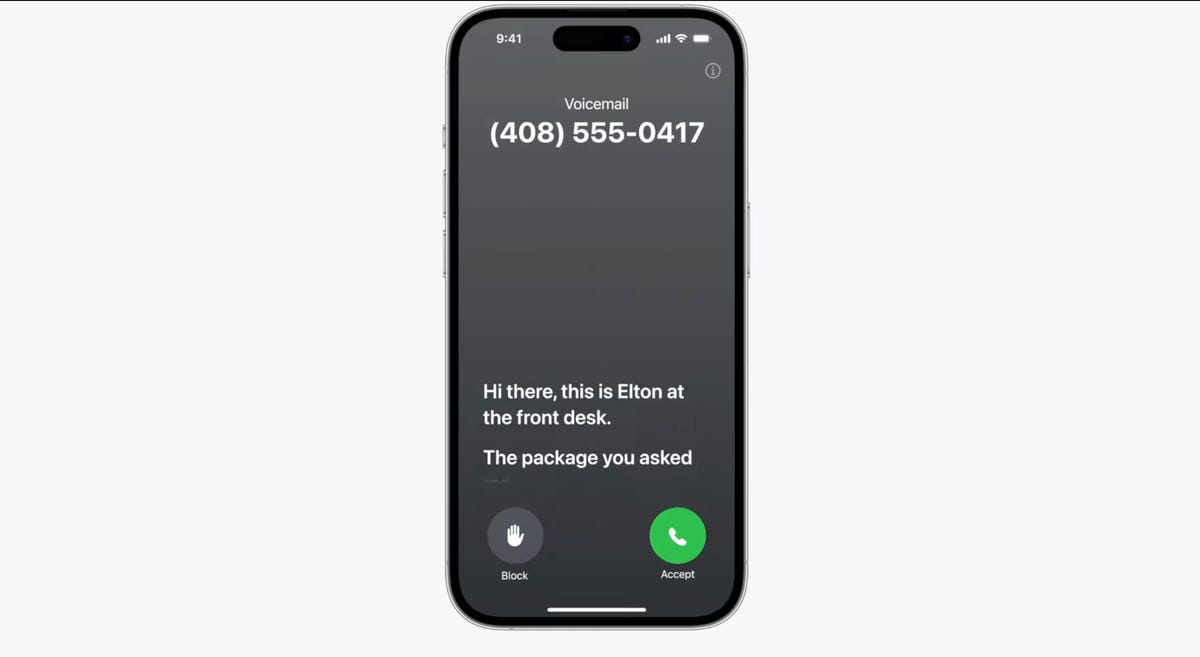
Live Voicemail lets you preview a transcription in realtime as a voicemail is being recorded.
With iOS 17, you’ll be able to see transcriptions of voicemails in real time, enabling you to pick up if it’s important. Spam calls will be automatically declined and won’t show as transcripts. While it may not be exactly the same, it sounds a lot like Google’s Call Screen feature, which has the Google Assistant screen your calls for you before answering the phone. It’s one of many phone call-oriented features Google added to its Pixel devices over the years, including Hold For Me and Direct My Call. The former has the Google Assistant wait on hold for you when calling certain businesses, while the latter helps you navigate automated phone menus.
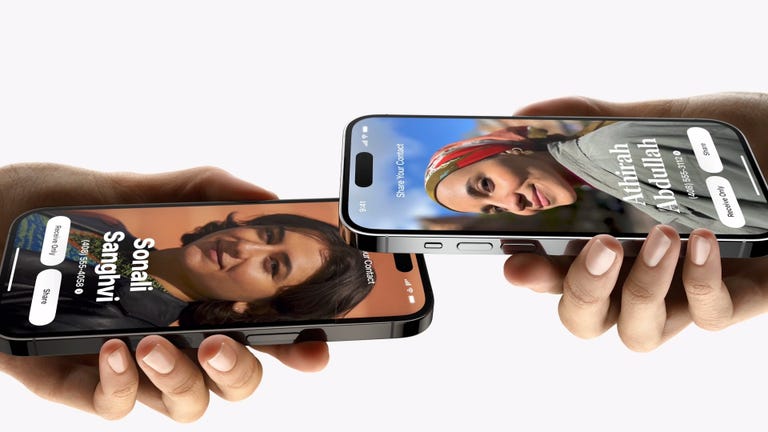
11:05
Audio message transcriptions
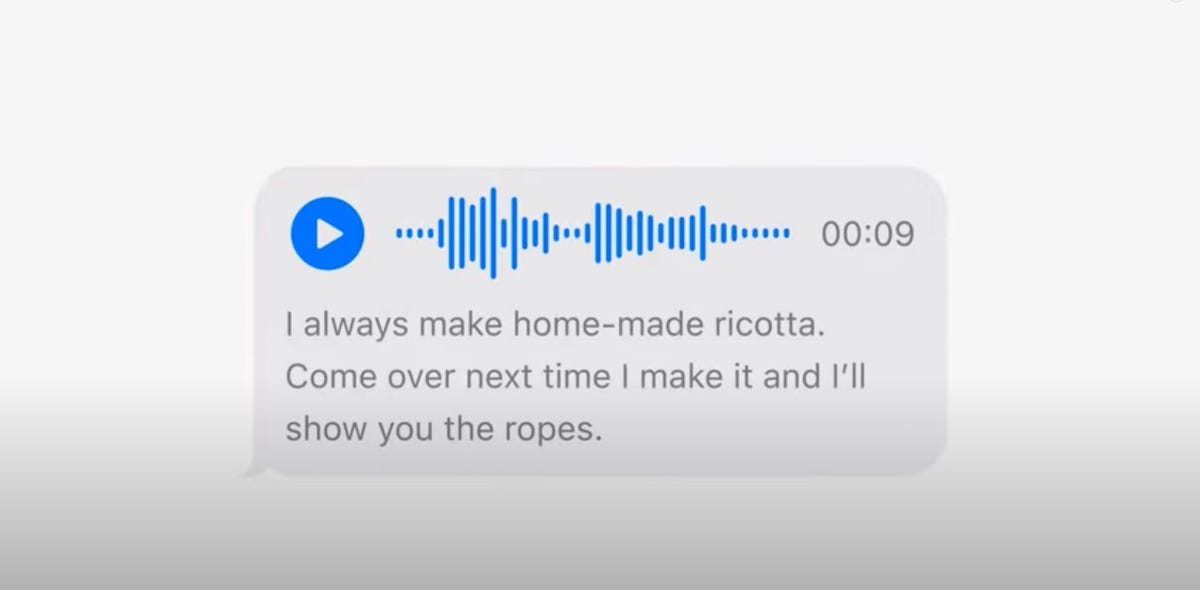
You’ll see transcriptions of audio messages in iOS 17.
It’s not always appropriate to listen to voice messages right away. Maybe you’re in public and don’t have your headphones, or perhaps you’re in the middle of a meeting. Apple wants to address this in iOS 17 with support for audio message transcription, which displays the text in line underneath the audio file in a messaging thread. Message transcriptions was also a key feature that Google highlighted when announcing the Pixel 7 and Pixel 7 Pro last year.
Better voice dictation for texting
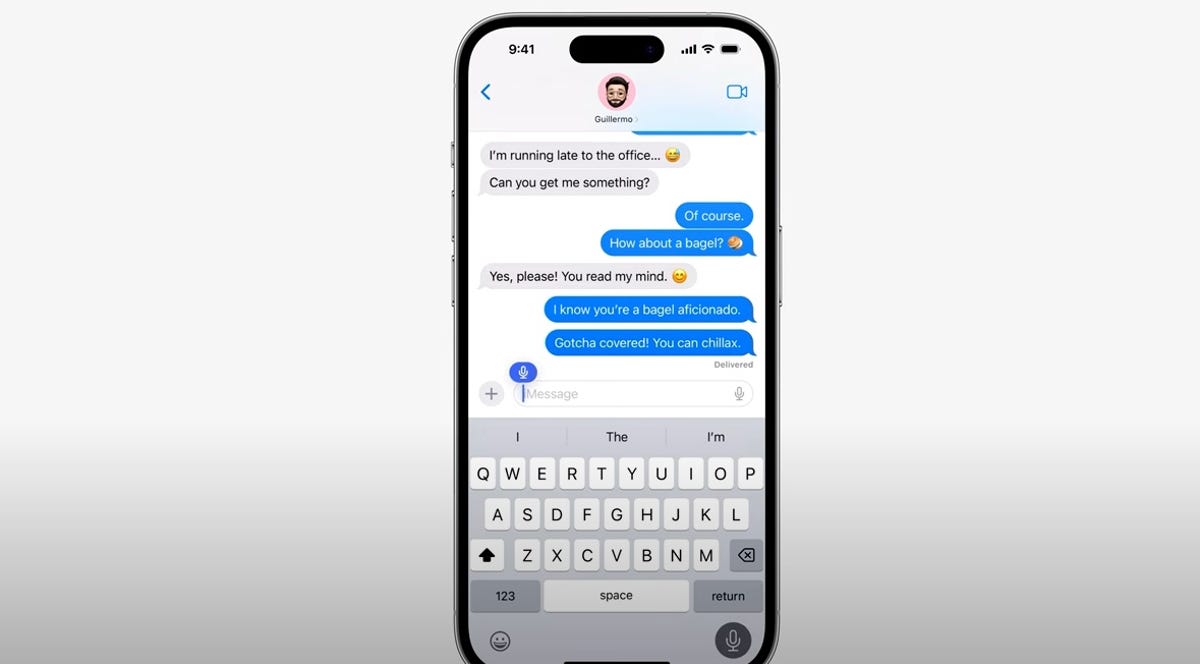
Apple says voice typing is improving in iOS 17.
When Google announced the Pixel 6 and 6 Pro, the first phones to run on its Tensor processor, it noted that the phones would have better speech recognition when dictating messages with the Google Assistant. Apple made a similar announcement during WWDC, saying that dictation in its Messages app should be more accurate because it now uses an improved speech recognition model.
StandBy mode
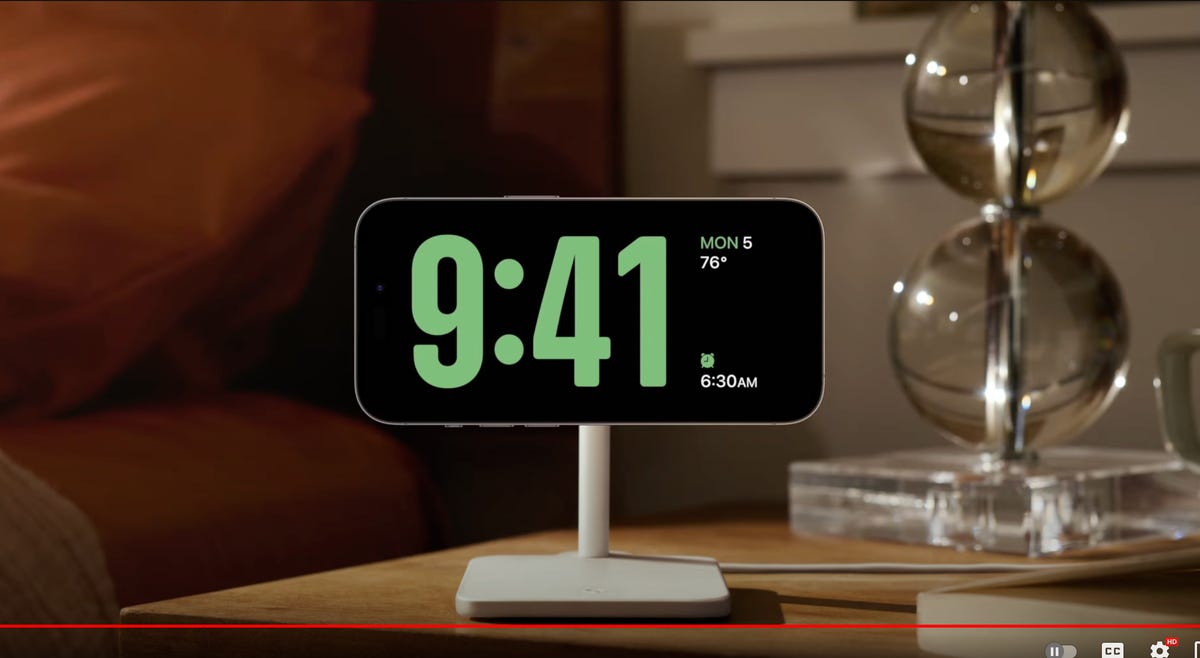
iOS 17 adds an attractive screen that shows photos, widgets and info when your iPhone is charging.
One of the more intriguing new features in iOS 17 is StandBy mode, which allows your iPhone to double as a smart display when it’s in landscape mode and charging. When in this mode, your phone can display the time, photos, widgets, notifications and Live Activities, which show real-time updates from time sensitive apps on the lock screen.
While it may sound very similar to the iPhone 14 Pro and Pro Max’s always-on display, the content is stylized to make it look more like a bedside clock or a smart display. Clock faces are colorful and can occupy the whole screen, for example. It feels like a hybrid between the iPhone 14 Pro’s always-on display and the Apple Watch’s nightstand mode.
Google’s execution is a bit different, but it’s accomplishing the same goal with its new Pixel Tablet. Google’s tablet is designed to be a cross between a general-purpose tablet and a smart home hub. Google leans into this approach more fully by including a charging dock that doubles as a speaker in the box, enabling the interface to change automatically when docked.
Taken together, these updates suggest that phones are getting more personalized, whether that’s by transcribing calls or providing more customizations. And based on Apple’s WWDC keynote and Google’s recent Pixel updates, it seems like that will continue to be true whether you prefer the iPhone or Android.
